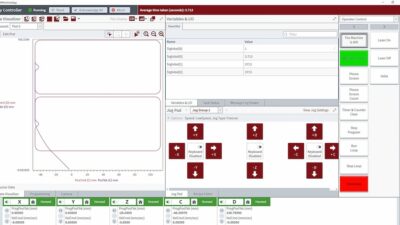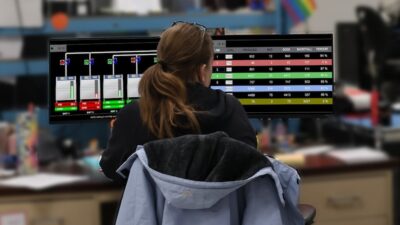As part of the lifecycle of many control systems, users need to perform statistical analysis of data pertaining to the operation. This function can be required at any point from being part of the initial definition process though post startup performance appraisals.Northwest Analytical Inc.'s (Portland, Ore.
As part of the lifecycle of many control systems, users need to perform statistical analysis of data pertaining to the operation. This function can be required at any point from being part of the initial definition process though post startup performance appraisals.
Northwest Analytical Inc.’s (Portland, Ore.) NWA Quality Analyst has the capabilities for supporting these investigations. This Microsoft Windows-based software package is designed as a stand-alone statistical quality control (SQC) application that has interfaces available for data input from other Windows-based applications.
Handling the data
This package has the functionality to address manufacturing and process applications. For process data that typically focus on the numeric value of a set of variables, NWA Quality Analyst provides a set of Variable Control Charts, which includes:
Individual values;
Median values;
Median;
X-bar;
Range;
Standard deviation;
Cumulative sum (q-sum), and
Exponentially Weighted Moving Average.
For manufacturing data where the focus is often on number of units with particular attributes, the software defines a series of charts titled Attribute Control Charts, which include:
Percent defective (p-chart);
Number defective (n-chart);
Nonconformities per unit (u-chart), and
Nonconformities (c-chart).
For both types of systems, data may be entered manually, directly into the Quality Analyst database; imported from other applications, such as Borland dBase, Microsoft Access and Excel, Corel Paradox; or from a DDE link.
Plenty of flexibility
This flexibility provides the opportunity to use current data formats without the effort to re-enter. At the same time, the presence of the DDE link gives the software the ability to build the database in real time from other applications running under Windows.
When defining a new database within Quality Analyst, a set of context “helps” effectively guide the establishment of field definitions. This is important for applications that will require manual data entry or will use the DDE-link feature.
Once data are in the Quality Analyst database, creating charts is a simple point-and-click operation—each major chart type has a toolbar button. To further aid in implementation, the software disables those chart types inappropriate for the field type being used.
While this is a very powerful package, users need to have a basic knowledge of SQC to benefit from this software. Documentation advises that knowledge of statistical analysis principles is assumed, both in terms of the theory behind formation of chart types and in their interpretation.
Documentation only addresses equations used without explanation of the options available in building the charts or discussion of their significance. However, the users’ manual does include a good bibliography to help the novice SQC user. Tutorial exercises also provide excellent insight into the chart functions and uses. This review is based upon release of NWA Quality Analyst 5.1.
For more information on Quality Analyst, visit www.controleng.com/freeinfo .
Author Information
Contributing Editor, Tracy J. Coates P.E. is a consulting engineer at PCE Engineering, Johnson City, Tenn.



